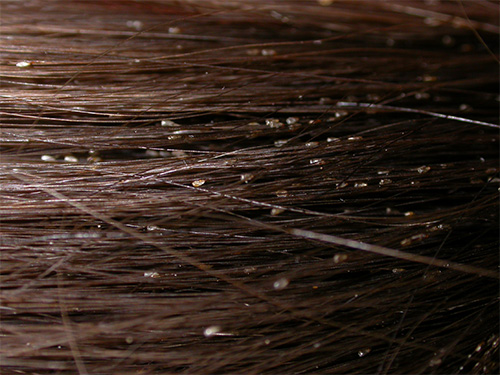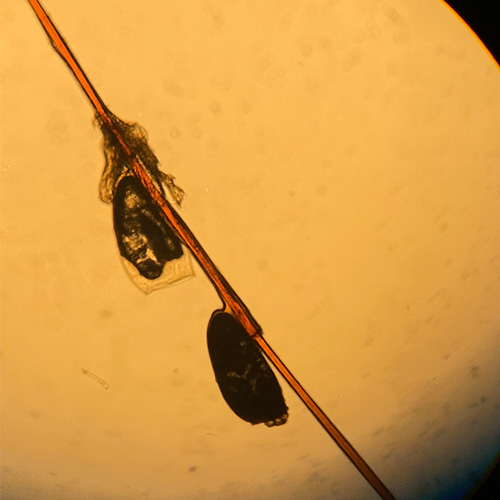Presentation and diagnosis of head lice
Most cases of head lice (Pediculus humanus var. capitis) are asymptomatic. Head lice are detected when eggs (nits) are noticed in the hair, or when there is significant itching of the scalp and nape of the neck. Excoriations and papules can be present around the occiput and nape, and lymphadenopathy with or without secondary bacterial infection may occur. For photos of head lice and eggs, see here.
Diagnosis of active lice infestation is confirmed by observing a moving louse. This can be achieved by wet combing. Apply a generous amount of hair conditioner to wet hair and comb with a fine-toothed comb (available from pharmacies). The conditioner stuns the lice and stops them crawling for about 20 minutes. Detangle the hair, divide into 3 to 4 cm sections, and comb each section. Wipe conditioner off the comb onto paper towel and look for lice and eggs. In high-risk settings where head lice are common (eg childcare, kindergarten), repeat this method at regular intervals to detect head lice infestation.
If live lice are found, notify the school of the infestation. For treatment of head lice, see here. Children can return to school after the initial treatment of head lice. Also examine household members and close contacts, and treat if necessary.



Photo sourced with permission from Dr Michelle Goh.

